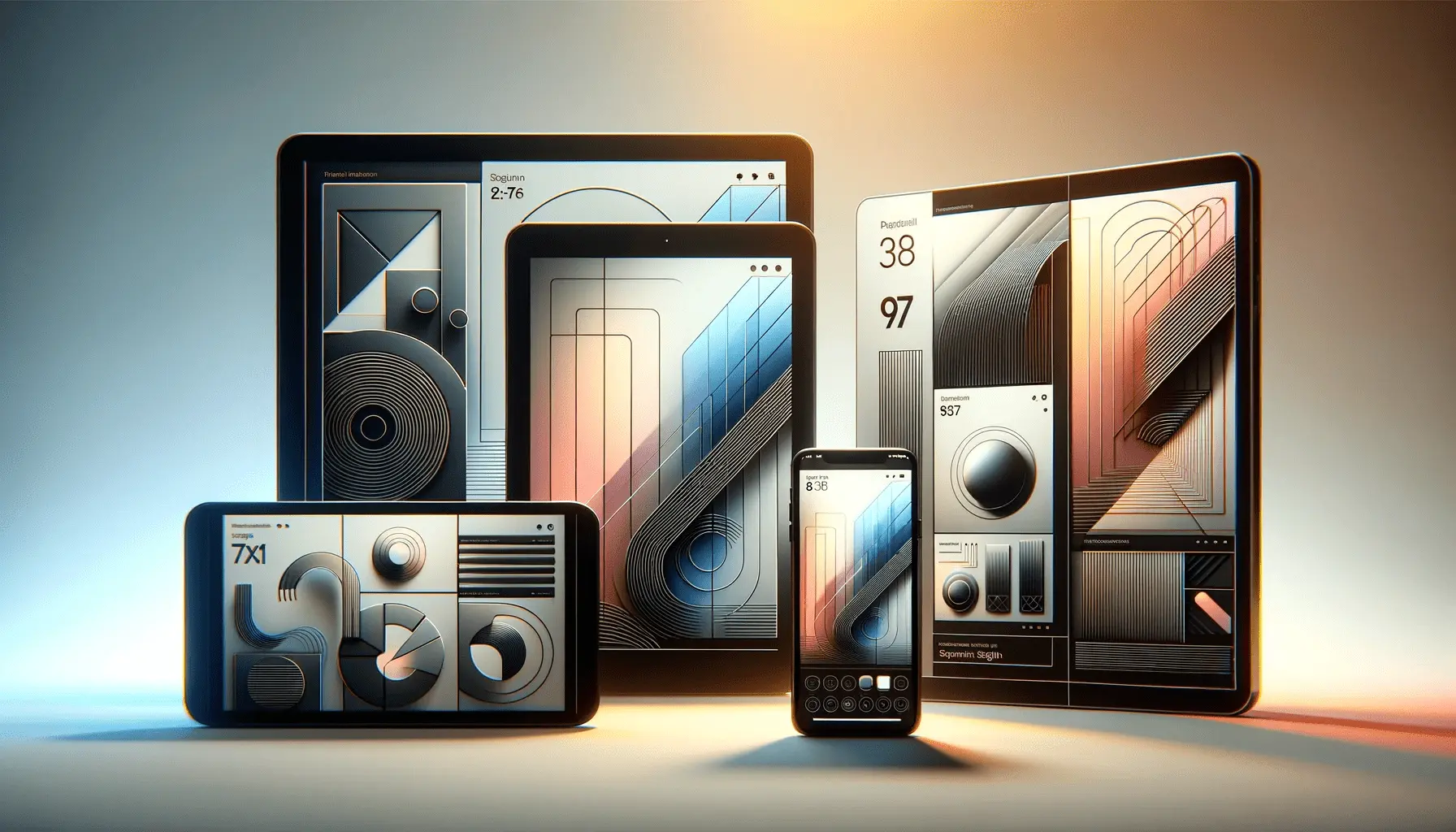Creating a blog that captivates and retains visitors is no small feat.
In the realm of digital content, where competition is fierce and attention spans are short, the user experience (UX) of a blog can make or break its success.
A well-designed blog does more than just look good; it provides a seamless, intuitive journey for its readers, from the moment they land on a page to the instant they leave.
This article delves into the critical role of UX in blog design, offering insights and strategies to enhance reader engagement and satisfaction.
The importance of UX in blog design cannot be overstated.
In an era where information is abundant, the differentiation factor often lies in how easily and pleasantly users can access and interact with content.
A blog designed with the user in mind prioritizes readability, navigability, and responsiveness, ensuring that content is not only king but also accessible and engaging.
By focusing on the user experience, bloggers can foster a loyal readership base, reduce bounce rates, and ultimately, achieve their digital presence goals.
- Understanding the Basics of UX in Blogs
- Design Principles for Enhancing Blog UX
- Implementing UX Strategies in Blog Content Creation
- Optimizing Blog Structure for Enhanced UX
- Engaging Users with Interactive Blog Elements
- Measuring and Improving Blog UX with Analytics
- Future Trends in Blog UX Design
- Conclusion: The Future of Blogging is User-Centric
- User Experience in Blog Design FAQs
Understanding the Basics of UX in Blogs
What is User Experience?
User experience encompasses all aspects of the end-user’s interaction with a blog, from layout and content organization to loading speed and mobile responsiveness.
A positive UX is achieved when users find the blog not only aesthetically pleasing but also easy and rewarding to use.
The goal is to meet the user’s needs in the most effective and enjoyable way possible, encouraging them to return and share the blog with others.
At its core, UX focuses on understanding the user’s journey through a blog.
This involves anticipating their needs, preferences, and potential frustrations, and designing the blog to address these proactively.
Elements such as the structure of information, the ease of navigation, and the visual appeal of the blog all play pivotal roles in shaping the user experience.
Key Components of Blog UX
The user experience of a blog is built on several foundational components, each contributing to the overall satisfaction of the reader.
These include:
- Usability: How easily users can navigate the blog and find the information they’re looking for.
- Accessibility: Ensuring the blog is usable by people of all abilities, including those with disabilities.
- Performance: How quickly the blog loads and responds to user interactions.
- Content Quality: The relevance, readability, and value of the blog’s content.
- Visual Design: The aesthetic appeal of the blog, including layout, color scheme, and typography.
Improving these components can significantly enhance the user experience, making the blog more engaging and user-friendly.
For instance, optimizing the blog’s loading speed can reduce bounce rates, while high-quality content can increase time spent on the site.
A blog’s user experience is a critical factor in its success, influencing everything from visitor engagement to search engine rankings.
Design Principles for Enhancing Blog UX
Creating a blog that offers an exceptional user experience requires a deep understanding of design principles.
These principles guide the design process, ensuring that the blog is not only visually appealing but also functional and user-friendly.
By adhering to these core principles, bloggers can create a space that truly resonates with their audience, encouraging deeper engagement and interaction.
Here are some fundamental design principles to consider when aiming to enhance the UX of your blog:
Consistency and Simplicity
Consistency in design ensures that users don’t get lost or confused while navigating your blog.
This includes maintaining a uniform color scheme, typography, and layout structure across all pages.
Simplicity, on the other hand, involves removing unnecessary elements that do not add value to the user’s experience.
A clean, uncluttered design helps users focus on the content, making their reading experience more enjoyable.
Navigation and Accessibility
Effective navigation is key to a positive user experience.
A well-organized menu, clear categories, and a search function can help users find the information they need quickly and easily.
Accessibility is equally important, ensuring that the blog is usable by everyone, including people with disabilities.
This can be achieved through the use of alt text for images, keyboard navigation, and readable fonts.
Responsive Design
In today’s mobile-first world, a blog must perform flawlessly across all devices, from desktops to smartphones.
Responsive design ensures that your blog automatically adjusts to the screen size and orientation of the device it’s being viewed on, providing a seamless experience for mobile users.
This not only improves usability but also contributes to higher SEO rankings, as search engines favor mobile-friendly websites.
Load Time Optimization
Users expect fast-loading websites.
A delay of just a few seconds can lead to increased bounce rates and lost readership.
Optimizing images, leveraging browser caching, and minimizing the use of heavy scripts and plugins are effective strategies to improve your blog’s loading time.
Fast load times enhance the user experience, keeping readers engaged and interested in your content.
Optimizing the user experience of your blog involves a combination of design, functionality, and performance. By focusing on these areas, you can create a blog that not only looks great but also meets the needs of your audience.
Implementing UX Strategies in Blog Content Creation
Content is the heart of any blog, and how it’s presented significantly impacts the user experience.
Implementing UX strategies in content creation ensures that your blog not only attracts readers but also keeps them engaged.
A thoughtful approach to content can make your blog more readable, accessible, and enjoyable for your audience.
Here are effective UX strategies for blog content creation:
Creating Scannable Content
Most online readers scan content to find information that’s relevant to them.
Making your content scannable improves UX by allowing readers to quickly locate the information they need.
This can be achieved through:
- Using headings and subheadings to organize content and provide an outline of the article.
- Incorporating bullet points or numbered lists to break down information into digestible pieces.
- Highlighting key points or statistics to draw attention to important information.
Writing for Your Audience
Understanding your audience is crucial in creating content that meets their needs and interests.
Tailoring your content to your audience involves:
- Using language and tone that resonate with your readers.
- Covering topics that are relevant and valuable to your audience.
- Addressing your readers’ questions, pain points, and interests.
Enhancing Readability
Readability affects how easily readers can understand and engage with your content.
Enhancing readability can be achieved by:
- Choosing a clear, easy-to-read font size and style.
- Keeping paragraphs short to improve the flow and make the text less daunting.
- Using simple language and avoiding jargon unless it’s relevant to your audience.
Incorporating Visuals
Visuals play a significant role in breaking up text and adding an element of interest to your content.
They can enhance the user experience by:
- Providing a visual break in long articles, making them easier to scan.
- Illustrating concepts and data through images, charts, and infographics.
- Adding emotional impact or humor with relevant photos or illustrations.
Incorporating UX strategies into your content creation process can significantly improve the overall experience for your readers, making your blog more engaging and effective.
Optimizing Blog Structure for Enhanced UX
The structure of your blog plays a pivotal role in optimizing the user experience.
A well-organized blog not only makes content easily accessible but also guides visitors through your site in a logical, intuitive manner.
By carefully planning your blog’s structure, you can ensure that users find value in your content, encouraging them to explore further and engage more deeply with your material.
Key strategies for optimizing your blog’s structure include:
Logical Information Hierarchy
Establishing a clear hierarchy of information helps users navigate your blog more effectively.
This involves organizing content in a way that reflects its importance, making it easier for readers to understand the relationship between different pieces of content.
Strategies include:
- Using a clear and consistent menu structure that categorizes content logically.
- Implementing a breadcrumb navigation system to help users keep track of their location within your blog.
- Designing an effective home page that serves as a gateway to the most important sections of your blog.
Effective Use of Categories and Tags
Categories and tags offer a way to group related content, making it easier for users to find articles that interest them.
Best practices for using categories and tags include:
- Limiting the number of categories to keep your blog organized and prevent overlap.
- Using tags to highlight specific topics or themes within a category.
- Ensuring that all posts are assigned to at least one category to maintain a structured archive.
Search Functionality
Incorporating a search bar allows users to find specific content quickly, enhancing the overall UX of your blog.
To optimize search functionality:
- Place the search bar in a prominent location, such as the header or sidebar.
- Consider using search plugins or tools that offer advanced search options, such as filtering by category or date.
- Regularly review search terms to understand what your audience is looking for and adjust your content strategy accordingly.
Mobile Responsiveness
With an increasing number of users accessing blogs from mobile devices, ensuring your blog is mobile-responsive is crucial for UX.
Mobile optimization involves:
- Choosing a responsive theme or design that automatically adjusts to different screen sizes.
- Testing your blog on various devices to ensure content is easily readable and navigation is user-friendly.
- Minimizing the use of pop-ups and other elements that can hinder the mobile user experience.
A structured, well-organized blog significantly enhances user experience by making content accessible, engaging, and enjoyable to explore.
Engaging Users with Interactive Blog Elements
Interactive elements can transform a static blog into a dynamic, engaging platform that encourages user participation and increases time spent on site.
By incorporating interactive features, bloggers can foster a sense of community, gather valuable feedback, and provide a more personalized experience for their readers.
These elements not only enhance the user experience but also contribute to building a loyal readership.
Effective ways to engage users with interactive blog elements include:
Comments and Discussions
Enabling comments on your blog posts invites readers to share their thoughts, ask questions, and engage in discussions.
To make the most out of this feature:
- Encourage readers to leave comments by asking questions or prompting discussion at the end of your posts.
- Respond to comments to show that you value your readers’ input and to keep the conversation going.
- Implement moderation tools to prevent spam and maintain a respectful, constructive discussion environment.
Interactive Polls and Surveys
Polls and surveys are great tools for engaging readers and gathering insights into their preferences and opinions.
They can be used to:
- Collect feedback on your blog’s content and direction.
- Understand reader demographics and interests.
- Encourage user interaction by making them feel like their opinions matter.
Social Media Integration
Integrating social media into your blog allows readers to easily share content, follow your social media profiles, and engage with your brand across platforms.
Strategies for effective social media integration include:
- Adding social sharing buttons to blog posts to facilitate easy sharing.
- Embedding social media feeds or posts to showcase real-time updates and user-generated content.
- Encouraging readers to follow you on social media for more content and updates.
Quizzes and Interactive Content
Quizzes, interactive infographics, and other engaging content types can significantly enhance the user experience by providing entertainment and personalized insights.
These elements can:
- Boost engagement by offering a fun, interactive way to consume content.
- Provide personalized results or recommendations, adding value for the reader.
- Encourage sharing on social media, increasing your blog’s reach and visibility.
Interactive blog elements not only enrich the user experience but also provide valuable opportunities for engagement and feedback.
Measuring and Improving Blog UX with Analytics
Understanding how users interact with your blog is crucial for continuous improvement of the user experience.
Analytics tools offer invaluable insights into user behavior, preferences, and potential pain points.
By analyzing this data, bloggers can make informed decisions to enhance UX, tailor content to meet audience needs, and ultimately drive more traffic and engagement.
Key metrics and analytics practices for measuring and improving blog UX include:
Tracking User Engagement
User engagement metrics such as time on page, bounce rate, and pages per session provide a clear picture of how visitors interact with your blog.
High engagement levels indicate that users find your content valuable and your blog user-friendly.
To improve engagement:
- Analyze the content with the highest engagement to understand what works and replicate these elements in future posts.
- Identify pages with high bounce rates to pinpoint issues and opportunities for optimization.
Understanding User Flow
The user flow through your blog reveals the paths visitors take, highlighting popular content and potential navigation issues.
By examining user flow, you can:
- Optimize the layout and navigation to streamline the user journey.
- Enhance or promote underperforming content that may be valuable but overlooked.
Utilizing Heatmaps
Heatmaps visually represent where users click, scroll, and spend time on your blog.
This data can uncover how well your design and content layout match user expectations.
To leverage heatmaps for UX improvement:
- Identify areas of your blog that attract the most attention and ensure they contain key information or calls to action.
- Adjust the placement of important elements based on user interaction patterns to improve visibility and engagement.
Conducting A/B Testing
A/B testing involves comparing two versions of a webpage to see which performs better in terms of user engagement and conversion.
This method can be particularly effective for testing:
- Different layouts, headlines, and content formats to determine what appeals most to your audience.
- Various calls to action to see which are more compelling and drive more interactions.
Assuming that all users interact with your blog in the same way can lead to missed opportunities for optimization and growth. Analytics provide the insights needed to tailor the UX to your unique audience.
Future Trends in Blog UX Design
The digital landscape is constantly evolving, and with it, the expectations of blog readers.
Staying ahead of UX design trends is crucial for bloggers who want to maintain and grow their audience.
As technology advances, new opportunities arise to create more engaging, intuitive, and personalized user experiences.
By anticipating and adapting to these trends, bloggers can ensure their sites remain relevant and appealing to users.
Emerging trends in blog UX design include:
Personalization and AI
Artificial intelligence (AI) and machine learning are becoming increasingly integral to delivering personalized user experiences.
Blogs can leverage AI to:
- Offer content recommendations based on user behavior and preferences.
- Automate content optimization for different audience segments.
- Enhance search functionality with natural language processing to better understand user queries.
Voice Search Optimization
With the rise of digital assistants and smart speakers, voice search is becoming more prevalent.
Optimizing your blog for voice search involves:
- Using natural, conversational language in your content.
- Incorporating question-based keywords and phrases that users are likely to speak rather than type.
- Ensuring your blog is mobile-friendly, as many voice searches are performed on mobile devices.
Augmented Reality (AR) and Virtual Reality (VR)
AR and VR technologies offer new ways to engage blog readers by creating immersive experiences.
While still in the early stages for most blogs, potential applications include:
- Virtual tours related to travel, real estate, or event blogs.
- Interactive product demonstrations for tech and review blogs.
- Enhanced storytelling through virtual environments for educational and entertainment content.
Accessibility and Inclusivity
Ensuring your blog is accessible to everyone, including users with disabilities, is not only a legal requirement in many jurisdictions but also a best practice for UX design.
Future trends in accessibility and inclusivity focus on:
- Adopting web content accessibility guidelines (WCAG) to improve site usability for all users.
- Incorporating inclusive design principles that consider the full range of human diversity, including age, gender, and physical abilities.
- Using technology to automatically adjust content and interfaces to meet individual user needs.
By keeping an eye on these future trends and continuously seeking to improve the user experience, bloggers can ensure their sites remain engaging, relevant, and competitive in the ever-changing digital landscape.
Conclusion: The Future of Blogging is User-Centric
The journey through the intricacies of user experience in blog design underscores a pivotal shift in the digital content landscape.
As we’ve explored, the essence of a successful blog transcends mere aesthetics, delving deep into the realms of usability, accessibility, and personalization.
The future of blogging is unequivocally user-centric, where the design and content are meticulously crafted to meet the evolving needs and preferences of the audience.
Embracing Change and Innovation
In the face of rapidly advancing technology and changing user expectations, bloggers must remain agile, continuously seeking out new ways to enhance the user experience.
This involves not only keeping abreast of current trends but also anticipating future shifts in user behavior and technology.
The integration of AI for personalized content recommendations, the optimization for voice search, and the exploration of AR and VR are just the beginning.
As bloggers, embracing these innovations can set your blog apart, making it a dynamic, engaging, and invaluable resource for your readers.
Commitment to Accessibility and Inclusivity
Moreover, the commitment to creating accessible and inclusive content is more than a trend—it’s a moral imperative.
Ensuring that your blog is navigable, understandable, and enjoyable for all users, regardless of their abilities, is a testament to the inclusive spirit of the digital age.
By implementing accessibility guidelines and inclusive design principles, bloggers can make a profound impact, reaching a wider audience while fostering a sense of belonging and community.
Creating a Legacy of Engagement
Ultimately, the goal of enhancing user experience in blog design is to create a legacy of engagement.
It’s about building a platform where users not only find the information they seek but also enjoy the journey of discovery.
This requires a delicate balance of innovative design, compelling content, and intuitive navigation, all tailored to the unique needs of your audience.
As we look to the future, it’s clear that the blogs that thrive will be those that put the user experience at the heart of every decision.
In conclusion, the evolution of user experience in blog design is an ongoing journey, one that offers endless opportunities for creativity, connection, and growth.
By focusing on the user, embracing innovation, and committing to accessibility and inclusivity, bloggers can create spaces that not only inform and entertain but also inspire and engage.
The future of blogging is bright, and it’s within our power to shape it into an inclusive, user-centric landscape that enriches the digital world.
Want your website to top Google search rankings? Leave the SEO to our professional agency!
User Experience in Blog Design FAQs
Explore common inquiries about enhancing the user experience in blog design, offering insights into best practices and strategies for creating engaging, user-friendly blogs.
User experience in blog design refers to how readers interact with and perceive a blog, focusing on ease of use, accessibility, and overall satisfaction.
UX is crucial for blogs as it directly impacts reader engagement, retention, and conversion rates by ensuring a seamless and enjoyable browsing experience.
Improve your blog’s UX by optimizing loading times, ensuring mobile responsiveness, organizing content logically, and incorporating interactive elements.
Navigation is pivotal in blog UX, guiding readers through content easily and efficiently, thereby enhancing user satisfaction and engagement.
A well-structured blog layout improves readability and accessibility, allowing users to find and consume content effortlessly, boosting overall UX.
Yes, visuals significantly impact blog UX by breaking up text, illustrating concepts, and adding aesthetic appeal, which enhances reader engagement.
Mobile responsiveness is essential for blog UX as it ensures users on any device have a consistent, accessible, and enjoyable experience.
Measure your blog’s UX success through analytics, tracking engagement metrics like bounce rate, session duration, and user feedback to identify areas for improvement.












